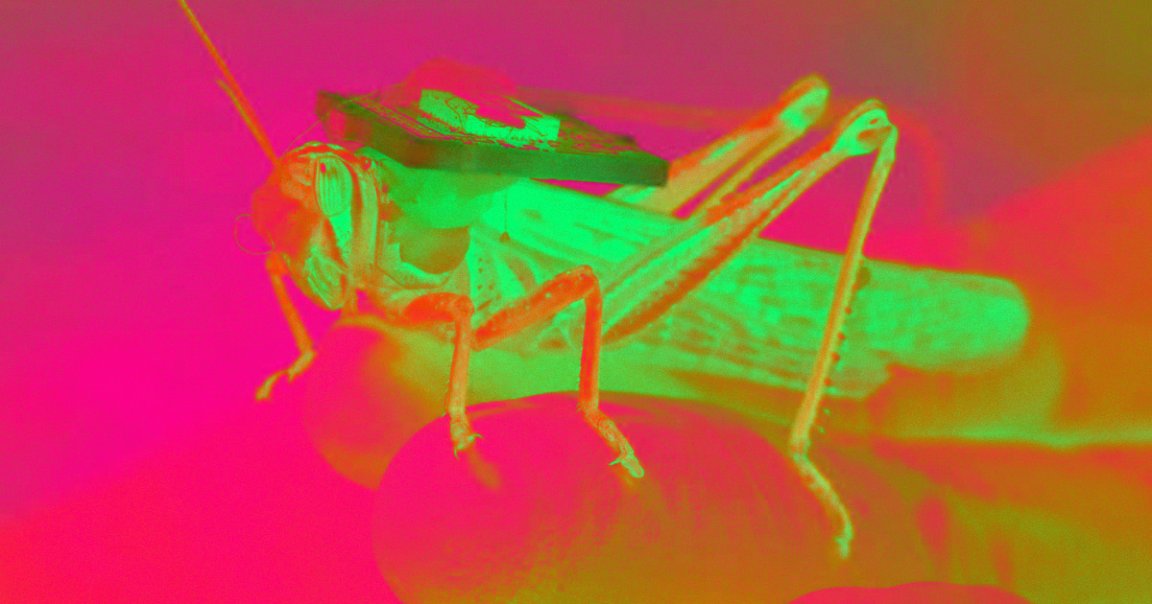
Cyborg Organism
Scientists have, yes, found a way to turn locusts into explosives-sniffing cyborgs, according to a study funded by the U.S. Navy. The idea is to “hijack” the insects’ incredible sense of smell rather than coming up with an artificial detection method from scratch.
The paper uploaded to preprint archive BioRxiv earlier this month describes how the team from Washington University in St. Louis transformed the unsuspecting insects into “biorobots” by implanting electrodes into their brains.
The Office of Naval Research in the US granted the team $750,000 back in 2016 to conduct the research.
Hijacking Senses
By examining which neurons were firing when different chemicals and odors were detected by the bugs’ senses, they found that these signals provided “a unique multivariate fingerprint” that allowed the locusts to distinguish between explosive vapors and non-explosive chemicals, according to the paper’s abstract.
According to the team’s paper, it’s the first time a biological system used for smelling was successfully “hijacked to develop a cyborg chemical sensing approach.”
To get the locusts to go where the team wanted them to go, they placed them in tiny wheeled robots that could be driven around.
And the locusts were extremely adept at spotting the explosives. It took them only “a few hundred milliseconds of exposure” to recognize explosive vapors.
READ MORE: Bomb-Sniffing Cyborg Locusts Can Now Successfully Detect Explosives [OneZero]
More on cyborg animals: “Cyborg-Like” Earthworm Controls Microchip With Its Muscles